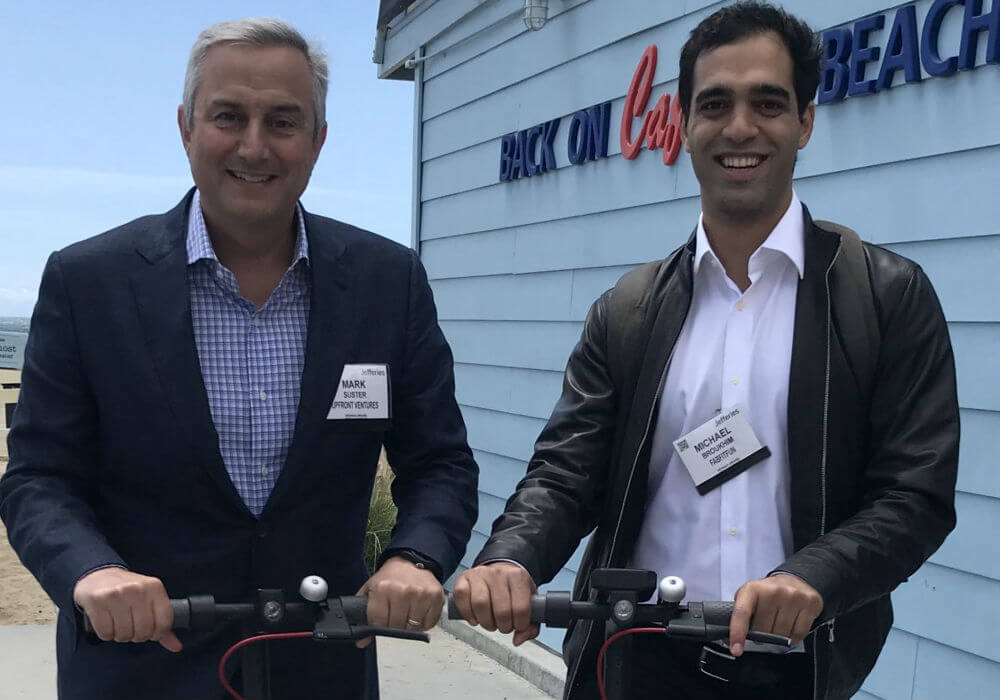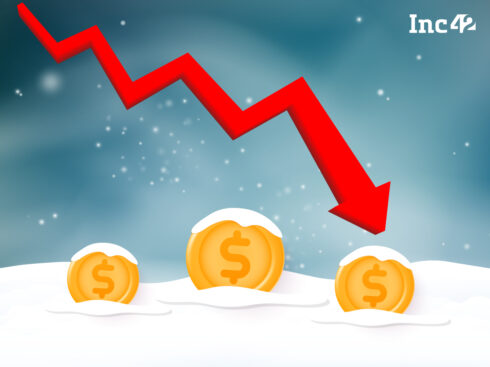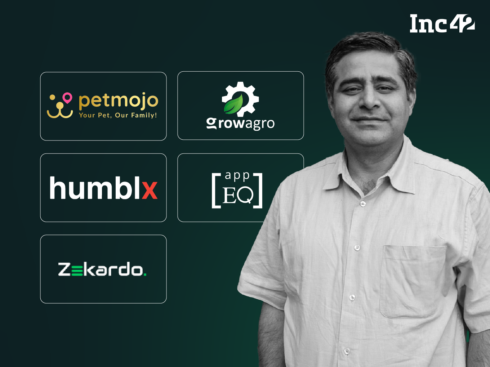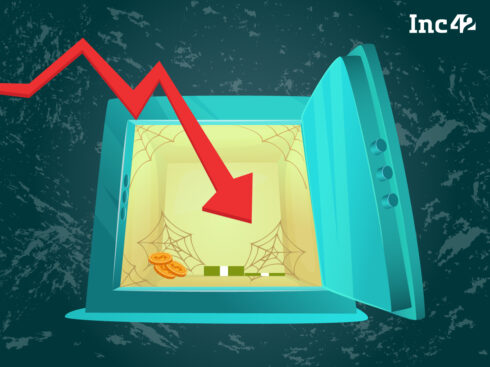
SUMMARY
Scooter Raised this Whooping Amount Of Funding In Less Than 18 Months Since Launch
No company has ever elicited so many questions by friends, colleagues, entrepreneurs, fellow VCs and journalists as has Bird, the company that pioneered the electronic scooter as a service market. Until recently it was headquartered 2 blocks from our offices in Santa Monica so we literally saw it emerge under our feet and we proudly invested in the last 3 rounds of financing.
Today the company officially announced its most recent round of capital — having raised $300 million — less than 18 months from when the company was created so I thought it was probably a good time to weigh in on the questions I get asked most frequently and why we’re so excited about Bird.
How Could Bird Really Be Worth The Reported $2 Bn Valuation?
While I promised not to comment on the exact valuation you can assume that it is very large and perhaps the fastest rise from zero to what some have called a “unicorn” valuation. I understand that this has caused some journalists and many an arm-chair Twitter commentator to shake their collective heads that some of us may have lost ours.
While this reaction to such a valuation is understandable, to anybody who has seen the meteoric rise in consumer demand and actual revenue the valuation is much less surprising and may turn out to be quite conservative. As I like to tell people who ask about Bird, “consumers have literally voted with their feet.” The company has done zero paid marketing.
Count me in the initial skeptics. The company launched a trial service in Santa Monica just last year and when I first saw the scooters (parked literally outside of our office) I was convinced nobody would want to ride them. Over the course of the first few months, I saw a few people out on the street taking Birds and then a steady uptick in riders.
The initial usage ramped up to such a heavy level that I would stare out of my 6th-floor office while on phone calls and literally watch five Birds pass our office every 2–3 minutes. The volume grew so steady that I finally hopped on one, rode down to Bird’s offices and pleaded with Travis to take money from us. I had literally never seen a consumer phenomenon take off so quickly.
Forget the valuation — I think it’s quite possible that Bird could be the fastest growing company to reach a billion dollars in run rate revenue. I’m not providing actual financial information or predicting a number or a date but I will tell you that the revenue growth to date has been astounding.
And since the consumer demand has been insatiable it is really only supply that is currently a limiting factor on how fast the company can grow.
Is Bird Really Defensible? Couldn’t Anybody Launch A Competitor?
This is the gut reaction of many of my friends and many commentators I’ve seen on Twitter and is the first question any skeptic will ask me. Since I see many companies in their earliest days I can tell you that I’ve heard people say this about nearly every great company/market created.
People said this about Ring (which went from startup to selling to Amazon > $1 billion in around 5 years), Facebook, YouTube, Airbnb, Uber, Twitter, Instagram and many other great behemoths of the technology industry. Ah, but Bird doesn’t have network effects! There is nothing viral! Anybody can launch a scooter service!
Not really.
- Capital. Because Bird was first to market, extremely innovative, quick to hire talented leadership and an experienced founder it was able to raise $125 million in an extraordinarily short period of time. That has allowed the company to launch in many markets, build amazing applications, design future versions of the scooter and monetize while many companies are still just drawing up their go-to-market plans. This allowed Bird to then raise $300 million from some of the top VCs in the country. Capital of course drives scale advantages and when you have “winner take most” markets it also has a way of scaring away some investors from investing in the 3–5th “me too” competitors. You can expect some strong competition, but it’s unlikely that there will be 5 great scooter companies.
- Density. One huge advantage the early-movers have is “density.” A dockless eScooter solution is only compelling if you believe that you’ll always be able to find a scooter in a relatively short walking distance or it defeats the purpose. If Bird has thousands of scooters in a neighborhood (and if it can acquire these scooters at cheaper prices due to scale advantages) then it’s significantly more difficult for new entrants to launch without serious capital and it’s hard to get serious capital from investors who perceive you’re late to the game.
- Design. As of today, commentators are imagining a world of undifferentiated scooters that all sort of look and feel the same. That’s a bit like imagining Apple launching the 2007 iPhone and then not having 10-years of constant improvements to maintain its market leadership position. Of course Bird already has many generations of scooters planned so if a competitor wants to launch today’s status quo, they can expect Bird to use its head-start and market knowledge to launch its next-generation vehicles.
- Data. Bird already has an enormous lead in data collection. What appears as just an electric-powered scooter is really a computer with wheels. Between our on-board CPUs and your mobile phone companions we have an enormous amount of data on transportation routes, where riders want to pick up scooters in the morning and where they leave them in the evening. This not only allows Bird to have advantages in right-sizing city inventory levels and proper placement to maximize yield, but the company has already been providing this data to cities to help them better plan their cities of the future. We clearly need a world in which gas cars don’t dominate dense city environments and providing this data to cities is a great start in that direction.
- Chargers. Many people assume that Bird has a team that picks up scooters in the evenings and charges them but one of the beautiful early innovations was to allow people in each local market to charge the scooters themselves and be financially compensated and then they place them in pre-determined locations in the morning. Of course you can have a few competitors and still find enough charges but once you’ve gotten 2–3 big players in any city it’s hard to imagine many more players building out as efficient of a charger network as the early innovator.
- Mechanics. What is even more remarkable than “chargers” is how Bird has build out local teams of mechanics in each market, providing large legions of skilled labor the ability to earn meaningful dollars for repairs to wheels, brakes, cables, batteries, electronics, etc. Local politicians wanting to see local job creation rather than jobs at tech firms all migrating to San Francisco should be heartened. Because each market won’t have unlimited labor suppliers of repair people and because the largest services can pay the best, there is inherent advantage in capturing the early pools of mechanics.
- Batteries. The biggest limiting factor of growth to date has been the supply of scooters in markets and this $300 million capital raise goes a long way to solving the supply challenge. As the scooters are electronic, they do require charging at the end of the day. To the extent that Bird can design scooters with longer-life batteries while others are perfecting the last generation of scooters, Bird can deliver a better daily revenue yield per scooter.
- Brand. Another obvious advantage is a term that often feels amorphous — “brand.” When you think about the category of scooters you think about Bird and that becomes a brand your friends want to try. The more people that see your brand as the innovator the more “earned media” the company gets and the product becomes synonymous with the category. You don’t “Bing” information or “Hulu and chill.” Brand matters.
How Does The Bird Service Work? How Do They Make Money?
I am in New York today and several people asked me how Bird actually works. “Do you buy one? How do you get access?” So if Bird isn’t in your area yet I’ll point out that you download an app, open the app to find the nearest Bird (as you would an Uber) and when you find one you scan the QR code to rent it. You enter your credit card information and driver’s license once and then it’s $1 to start in and currently 15 cents per minute.
I get why it works in Santa Monica, but will it really work in …. [name your city]?
Yeah, I know your first thought. That’s what we all thought about Uber, too. Turns out that there are many more markets where scooters are already working and booming. It’s obvious that in some markets they will be useable 365 days / year and in others it might be just 9–10 months but the footprint of where scooters will work (and is already working) is much broader than you’d initially think.
Does it surprise you that the fastest-growing “unicorn” was launched in Los Angeles and not San Francisco?
No. Not at all. Leave aside that we’re the second largest market in the United States with the third-largest tech ecosystem and the fastest growing startup market in the country, LA is clearly a pioneer in transportation solutions and has been for the past 100 years having led the way in freeways (highways), aerospace, rocket propulsion, deep water ports and now space flights (with SpaceX) it is no wonder that Bird was started in LA. Bird is the natural evolution in billion-dollar++ outcomes in LA.
This is why so many great LA funds like Upfront, Greycroft and B Capital Global have all backed Bird. And with such a strong and experienced founder in Travis and great local executives like Paige Craig whom we’ve all known and worked with for the past 10 years, we are confident that this team can out execute.
Why scooters? Can’t people just ride bikes or walk?
Yes, I get this a lot. Walking is great and I love to walk around Santa Monica, San Francisco and New York City but there are sometimes I need to be 1.6 miles away and I don’t have the time to walk there and back. Uber or Lyft would sit in a wall of congestion and perhaps public transportation lines aren’t set up between my point A and point B.
Scooters crush this situation. Or perhaps you’re commuting daily on the Caltrain to SF, the Amtrak to NYC or the MetroLine from Downtown LA to Santa Monica … scooters provide an excellent “last-mile” commuting solution. If more broadly adopted, they should help reduce urban traffic congestion and help reduce carbon emissions.
And sure, I love riding bikes. Mostly I love my Peloton bike. But if I judge by the usage around Santa Monica I can tell you that scooters are crushing bikes for short-haul (< 3 miles) and bikes are probably the only real solution for 5+ miles if you don’t want to take a car or public transportation.
But don’t just take my word for it — below is a regular scene in Santa Monica while behind me there must have been 50 Birds riding by in a 3 minute period and I expect many other markets when scooters are fully deployed. As I said, consumers have “voted with their feet.”
Are the scooters safe? Shouldn’t everybody wear helmets?
Yes, everybody should wear helmets and of course Bird reminds riders of this. In fact, Bird has already given out more than 30,000 free helmets. Of course Bird can’t monitor every rider and to date many don’t wear their helmets. We notice this because scooters are new and stand out. To everybody who has mentioned this to me I walk out into Santa Monica and point out just how many bicyclists aren’t wearing helmets.
I point out that they’re there but we have become invisible to them because bicycles have exited our whole lives. Yes, both Bird riders and bicycles should wear helmets. I can tell you that Bird is currently limited to a maximum speed of 15 miles/ hour and takes rider safety very seriously.
Summary
Bird has created a brand-new transportation sector that has captured the imagination of riders and investors alike. It is clear that this level of success will breed strong competitors, likely including Uber, who can’t afford not to have an answer to the success of the scooter market.
I like Bird’s chances because it has not only been the clear market innovator but is also incredibly focused on execution in this core market rather than having to be excellent in many solutions simultaneously.
Yes, it is unprecedented for a company to start from scratch and be worth billions of dollars in less than 18 months. But it is even more rare for a company to do that while also scaling its revenue at such an impressive clip and with no paid customer acquisition.
[This post by Mark Suster appeared first on bothsidesofthetable and has been reproduced with permission.]


























